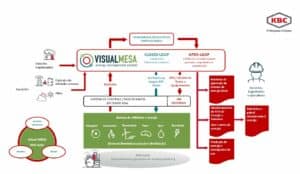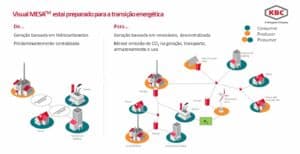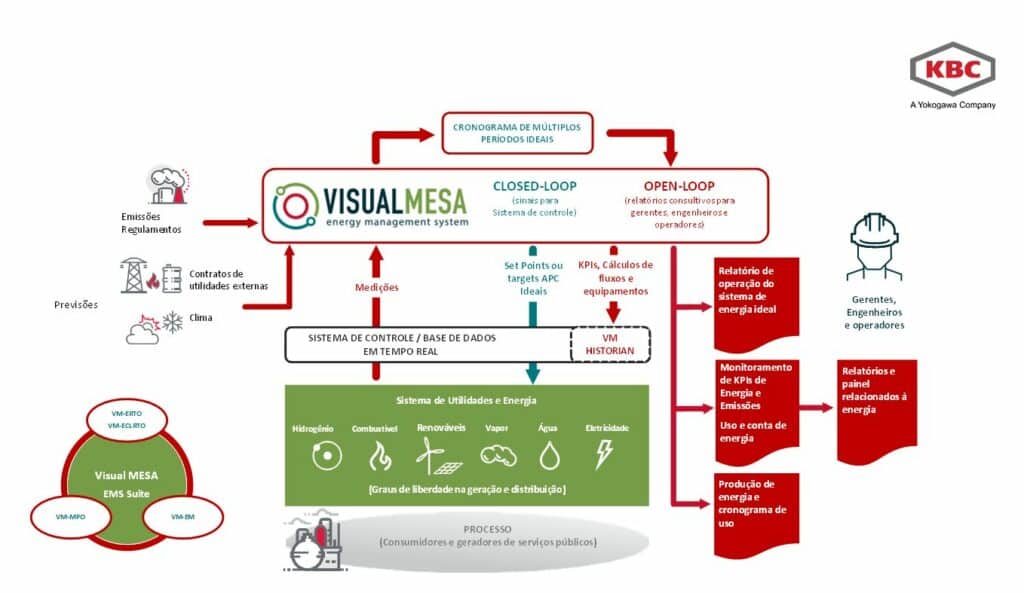The energy landscape is evolving, with energy costs fluctuating over a wide range and Greenhouse Gases (GHGs) emissions reduction concerns being very seriously considered around the world. Traditional energy sources, such as coal and nuclear, have declined in importance, while supplies from natural gas and renewables are growing consistently. Manufacturers are very aware of the role of energy in overall cost structures and emissions, so continuously trying to reduce both.
Effects of the COVID-19 pandemic have impacted consumption patterns, resulting in drastic price changes for oil and petroleum derived products. While overall consumption is expected to recover somewhat in 2021, traditional fuels may never return to their previous price levels since the competing options (i.e., renewables) continues to grow and becoming continually cheaper. Power market prices changing at an hourly basis or even faster are becoming more and more common around the world. Brazil is going to have the hourly changing PLD being implemented very soon.
Energy optimization is naturally one of the first places to look
Even so, for large-scale process plants, energy normally accounts for 50% of operating expenses. Consequently, an energy use reduction of 10% can often improve margins by 5%. As companies seek to boost profits and reduce emissions, energy optimization is naturally one of the first places to look.
When consumption can be measured in detail, in real-time, it is possible to significantly reduce total energy use with just a few available handles and actions. Area by area, a site can quickly make improvements to improve efficiency and reduce consumption and emissions. On the other hand, large-scale improvement projects, such as building an in-house cogeneration system, need to be examined carefully for cost/benefit potential.
Process plants and other manufacturing sites need to consider how the available energy vectors, either traditional or renewables sources, can be produced, distributed, and mixed to be used by integrating them within or reformulating existing energy systems. The objective is reducing both, costs, and GHGs emissions.
Hydrogen production can be considered as an example.
Traditionally, the least expensive way for a plant to generate hydrogen is by reforming methane, but this process produces carbon dioxide as a byproduct, which is normally vented to atmosphere. If the plant wants to eliminate the carbon dioxide stream, it can follow a more costly approach and use power to break down water into oxygen and hydrogen (i.e., “green hydrogen”) by electrolysis. Deciding if this is advantageous highly depends on the power source.
If the electricity used to electrolyze water comes from a coal-fired, subcritical power plant, the amount of carbon dioxide produced per unit of hydrogen is probably worse than just reforming methane. But, if generated by wind turbines or by a bank of photovoltaic panels, or surplus output from the facility’s cogeneration system, the economics could change. Using this approach produces less (or zero) carbon dioxide, uses no methane, and might be less expensive. These conditions might not be available all the time, every day, but a given industrial site should be able to take advantage of them when possible.
The ability to make this determination requires detailed knowledge of the sources and uses of energy for the facility at any given moment and being able to coordinate information, forecasts, scheduling, regulations, reporting and control activities, as well as the appropriate set of software tools, as described in Figure 1.

When data, models and software tools are available, energy usage can be optimized to simultaneously minimize cost and emissions. Few sites could perform such an evaluation automatically, in real time. Even large and energy-intensive facilities, such as oil refineries and multi-unit chemical plants, may not have the expertise nor software systems to gather all the supporting data and put it to work.
Selecting which energy source should be used at any given time depends on having data related to all the possible options. Should we fire-up the cogeneration system and minimize power import from the grid, do the opposite or something between? Making the proper decision calls for knowing the fuel and operating costs compared to the current cost of running off the grid. These values could fluctuate in time, depending on power price, weather conditions, renewable sources availability, etc. For example, could it be not practical to start the cogeneration plant to run for just one or two hours, so realistic forecast must be made. In a renewable dominated scenario, due to the variability of the climate factors impacting the power generation, such as wind speed and solar intensity, energy storage mechanisms should be available to capture the surplus and be used as backup when renewable generation is expected to decline. A decision is to be taken, also in real-time, about when to fill or deplete the storage. All this leads to a great challenge for the person or group in charge of optimally managing the energy system.
Clearly this kind of analysis cannot be done manually to the extent and with the necessary speed for a large and complex facility, especially when renewables are involved. Fortunately, the tools already mentioned, using the real-time, model based, Digital Twin approach, can consider both the sources and uses of energy, making it possible to optimize selections well beyond conventional energy and emissions reduction efforts.
Such a set of applications has many specific capabilities, including:
- An integrated real-time, model based digital twin that considers equipment and subsystems common to traditional, carbon-based energy networks (fuel, steam, electricity), but also equipment and systems related to renewable energy (solar, wind, biomass).
- Support for forecasting, which deals with future conditions of the site and its environment. These can include weather and market conditions (for example, hourly PLD) on the supply side, plus process energy demand, including steam, power, fuels, hydrogen, etc.
- Support for analyzing current and past energy efficiency and performance of the site from historical data.
- Support for optimal management of energy inventory.
- Support to optimize in real time while taking into consideration the optimal schedule, frequently updated on a moving horizon time frame.
- Automated operation of these functions in the long and short term to make them really feasible and free up operators for higher-value activities.
Visual MESATM applications suite (Table 1) are built around a Digital Twin model of the facility, providing real-time, model-based analysis of all the energy systems of the entire site and neighbors. Once in operation, this combined multi-period optimization (MPO), energy monitoring (EM) and real time optimization (ERTO/ECLRTO) perform activities considering the past and optimizing the present but with an eye into the future. The MPO functions as a monitor and guidance for the energy real time optimization, considering a moving horizon optimal multi-period scheduler, allowing the facility always to operate at the lowest cost and within emission constraints.
In stand-alone use, the combined MPO/EM/ERTO/ECLRTO approach helps operators and engineers generate, analyze, and distribute the optimal schedule of utility systems of the site, even including its neighborhood, under the concept know as Virtual Power Plant (VPP). A VPP could be a relatively complex network of decentralized power generating units such as wind farms, solar parks and Combined Heat and Power (CHP) units, as well as power consumers, green hydrogen generators/users and storage systems. The interconnected units are considered as a whole, to be optimally scheduled, monitored, and optimized in real time.
| VM-ERTO / ECLRTO |
| Visual MESA Energy Real Time Optimizer (open or closed loop) is the leading real-time digital twin for energy systems optimization, including both continuous and discrete variables |
| VM-EM |
| Visual MESA Energy Monitor is specifically designed for the energy systems monitoring (KPIs calculation, historization, energy balances, etc.) |
| VM-MPO |
| Visual MESA Multi-Period Optimizer is the energy management tool for the optimal scheduling of energy assets, including storage, continuous and discrete variables, as well as multi-period decisions |
Table 1: Visual MESATM EMS Suite, applications scope.
Real-time energy management tools, including optimal scheduling, monitoring and optimization, must be tailored to each facility or VPP since each situation is different. The sources and uses of energy vary widely from one plant to another, so no single solution can fit everywhere. Yokogawa’s KBC has more than 100 installations worldwide, helping customers around the world to maintain a constant evolution and improvement. Many customers were consistently using these technologies for decades, being able to drive their energy systems in an optimal way, right now and during the upcoming energy transition (Figure 2).

The Visual MESATM energy management applications suite is configured to work autonomously, gathering, and processing the necessary forecasts of the external variables—such as fuel/power price projections and weather forecasts -, executing calculations, historizing key performance indicators, producing and distributing the resulting reports. These can run as open loop or closed loop actions, depending on whether targets generated from the schedule are to be automatically passed from the scheduler to the optimizer and, from there, to be manually implemented by the Operators or flowing down to the Advanced Process Control (APC) or basic control layer.
Consistency among the decisions systems at different time scales, optimizing in real time but accounting for the constraints imposed by the optimal schedule is guaranteed. Consequently, overall cost and GHGs emissions can be substantially reduced with the help of a real-time, model based Digital Twin approach.




